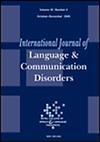Picture Description Discourse of the Western Aphasia Battery: Preliminary Reference Data From Mandarin Speakers and Comparison With Anomic Aphasia
Abstract
Background
Discourse impairment significantly affects communication effectiveness. For a comprehensive understanding of pathological discourse behaviour, documentation of typical discourse production is essential. However, reference data from Mandarin speakers have not been previously available.
Aims
This study sought to: (1) develop preliminary reference data for the Mandarin-speaking population to characterise discourse performance elicited by the picnic scene picture description task from the Western Aphasia Battery (WAB) and explore the relationship between demographic variables (i.e., age, education, gender) and discourse performance; (2) examine how persons with anomic aphasia differ from healthy adults on discourse measures.
Method and Procedure
We recruited 207 healthy Mandarin-speaking adults to establish the reference data. The picture description task of the WAB was administered to all participants. Effects of age, gender, and years of education on discourse performance were examined. Additionally, the microstructural discourse variables of 11 individuals with anomic aphasia were compared with those of 11 age-, gender-, and education-matched healthy adults.
Outcomes and Results
Preliminary reference data were obtained. Findings in healthy controls revealed statistically significant effects of age and education on syntactic complexity (mean length of utterance) and communication efficiency (correct information units per minute). Age significantly impacted transmission effectiveness (percentage of correct information units). Education level significantly influenced lexical diversity (the moving-average type-token ratio). Individuals with anomic aphasia performed more poorly than healthy controls on most discourse measures.
Conclusions and Implications
To our knowledge, this study provides the first reference data for analysing discourse production in the WAB picture description task among the Mandarin-speaking population. Persons with anomic aphasia underperformed healthy controls on most of the discourse measures. The findings contribute to improving microstructural evaluation of discourse impairment in clinical settings, particularly for persons anomic with aphasia.
WHAT THIS PAPER ADDS
- Discourse analysis is becoming an area of growing interest. Microstructural measures reveal discourse deficits in aphasia that standardised tests may fail to detect. However, the absence of reference data in Mandarin for healthy adults presents a notable constraint that prevents the in-depth assessment of discourse in clinical settings.
- This study established preliminary reference data for the Mandarin-speaking population using the WAB picnic scene description task while examining the influence of demographic factors (age, education, gender) on discourse performance. The study compared discourse measures between healthy controls and persons with anomic aphasia. Findings demonstrated that age and education significantly influenced discourse performance in healthy participants. Significant differences were observed in most discourse measures between the control and anomic aphasia groups.
- The reference data from this study enables clinicians to better understand and interpret the discourse abilities of persons with aphasia by identifying both specific measures and the extent to which these individuals exhibit discourse impairments compared to healthy controls. Microstructural discourse measures can be employed to compare the discourse abilities of healthy controls and individuals with aphasia.


 求助内容:
求助内容: 应助结果提醒方式:
应助结果提醒方式:


